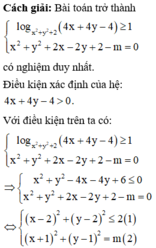x2-y2+2x-4y-10=0 với x,y nguyên dương
Tìm x,y
tìm số nguyên x,y thỏa mãn
x2-2x+y2+4y-4<0
\(x^2-2x+y^2+4y-4< 0\)
⇔ \(\left(x-1\right)^2+\left(y+2\right)^2< 9\)
Mà \(\left(x-1\right)^2\ge0;\left(y+2\right)^2\ge0\) và 2 số này đều là bình phương của một số nguyên
Nên ta có các trường hơpj
TH1 : \(\left\{{}\begin{matrix}\left(x-1\right)^2=0\\\left(y+2\right)^2=0\end{matrix}\right.\) \(\Leftrightarrow\left\{{}\begin{matrix}x=1\\y=-2\end{matrix}\right.\) (TM)
TH2 : \(\left\{{}\begin{matrix}\left(x-1\right)^2=1\\\left(y+2\right)^2=1\end{matrix}\right.\) .....
TH3 : \(\left\{{}\begin{matrix}\left(x-1\right)^2=4\\\left(y+2\right)^2=1\end{matrix}\right.\) .....
Thôi tự túc mấy trường hợp còn lại. Nghi đề sai lắm :((
⇔ \(\left(x-1\right)^2+\left(y+2\right)^2< 1\)
Mà \(\left(x-1\right)^2;\left(y+2\right)^2\ge0\forall x;y\) 2 số này đều là bình phương của một số nguyên
\(\Leftrightarrow\left\{{}\begin{matrix}\left(x-1\right)^2=0\\\left(y+2\right)^2=0\end{matrix}\right.\) \(\Leftrightarrow\left\{{}\begin{matrix}x=1\\y=-2\end{matrix}\right.\)
c) Tìm x, y biết: x 2 + y 2 – 2 x + 4 y + 5 = 0
c)Ta có: x2 + y2 – 2x + 4y + 5 = (x2 – 2x + 1) + (y2 + 4y + 4)
= (x – 1)2 + (y + 2)2
Vậy (x – 1)2 + (y + 2)2 = 0 ⇒ x – 1 = 0 hay y + 2 = 0
⇒ x = 1 hoặc y = -2
Tìm các số nguyên x,y biết:
a) xy+3x+y=8
b)x2+y2+2x-4y=5
a) \(xy+3x+y=8\)
\(\Leftrightarrow\left(xy+3x\right)+\left(y+3\right)=11\)
\(\Leftrightarrow x\left(y+3\right)+\left(y+3\right)=11\)
\(\Leftrightarrow\left(x+1\right)\left(y+3\right)=11=1.11=\left(-1\right).\left(-11\right)\)
Ta xét các TH sau:
+ \(\hept{\begin{cases}x+1=1\\y+3=11\end{cases}}\Rightarrow\hept{\begin{cases}x=0\\y=8\end{cases}}\)
+ \(\hept{\begin{cases}x+1=11\\y+3=1\end{cases}}\Rightarrow\hept{\begin{cases}x=10\\y=-2\end{cases}}\)
+ \(\hept{\begin{cases}x+1=-1\\y+3=-11\end{cases}}\Rightarrow\hept{\begin{cases}x=-2\\y=-14\end{cases}}\)
+ \(\hept{\begin{cases}x+1=-11\\y+3=-1\end{cases}}\Rightarrow\hept{\begin{cases}x=-12\\y=-4\end{cases}}\)
Vậy ta có 4 cặp số (x;y) thỏa mãn: (0;8) ; (10;-2) ; (-2;-14) ; (-12;-4)
a. xy + 3x + y = 8
=> x ( y + 3 ) + ( y + 3 ) = 8 + 3 = 11
=> ( x + 1 ) ( y + 3 ) = 11
| x + 1 | y + 3 | x | y |
| 11 | 1 | 10 | - 2 |
| 1 | 11 | 0 | 8 |
| - 11 | - 1 | - 12 | - 4 |
| - 1 | - 11 | - 2 | - 14 |
Vậy các cặp ( x ; y ) thỏa mãn đề bài là ( 10 ; - 2 ) ; ( 0 ; 8 ) ; ( - 12 ; - 4 ) ; ( - 2 ; - 14 )
b. Không rõ đề
b) \(x^2+y^2+2x-4y=5\)
\(\Leftrightarrow\left(x^2+2x+1\right)+\left(y^2-4y+4\right)=10\)
\(\Leftrightarrow\left(x+1\right)^2+\left(y-2\right)^2=10=1^2+3^2=1+9\)
Mà x,y nguyên và \(\left(x+1\right)^2;\left(y-2\right)^2\) là các SCP nên ta xét các TH sau:
+ \(\hept{\begin{cases}\left(x+1\right)^2=1\\\left(y-2\right)^2=9\end{cases}}\) => \(\orbr{\begin{cases}x+1=1\\x+1=-1\end{cases}}\) và \(\orbr{\begin{cases}y-2=3\\y-2=-3\end{cases}}\)
=> \(\orbr{\begin{cases}x=0\\x=-2\end{cases}}\) và \(\orbr{\begin{cases}y=5\\y=-1\end{cases}}\)
+ \(\hept{\begin{cases}\left(x+1\right)^2=9\\\left(y-2\right)^2=1\end{cases}}\) => \(\orbr{\begin{cases}x+1=3\\x+1=-3\end{cases}}\) và \(\orbr{\begin{cases}y-2=1\\y-2=-1\end{cases}}\)
=> \(\orbr{\begin{cases}x=2\\x=-4\end{cases}}\) và \(\orbr{\begin{cases}y=3\\y=1\end{cases}}\)
Vậy ta có các cặp số (x;y) thỏa mãn: (0;5) ; (0;-1) ; (-2;5) ; (-2;-1) ; (2;3) ; (2;1) ; (-4;3) ; (-4;1)
Bài 1 : Tìm x,y
f) x2 + y2 - 2x + 6y + 10 = 0
g) x2 + y2 +1 = xy +x + y
h) 5x2 - 2x.(2 + y ) + y2 +1 = 0
a, (x^2 -2x+1)+(y^2 +6y+9) =0
(x-1)^2 +(y+3)^2 =0
Do đó: x-1=0 và y+3=0
Vậy x=1 và y=-3
b, x^2 +y^2 +1=xy+x+y
2x^2 +2y^2 +2=2xy+2x+2y
2x^2 +2y^2 -2xy-2x-2y +2=0
(x^2 -2x+1)+(y^2 -2y+1)+ (x^2 +y^2 -2xy)=0
(x-1)^2 +(y-1)^2 +(x-y)^2 =0
Suy ra: x-1=0, y-1=0 và x-y=0
Vậy x=1,y=1
c,5x^2 - 4x-2xy+y^2 +1=0
(4x^2 -4x+1)+(x^2 -2xy+y^2 )=0
(2x-1)^2 +(x-y)^2 =0
Do đó: 2x-1 =0 và x=y suy ra: x=0,5 và x=y
Vậy x=y=0,5
Trong tất cả các cặp (x;y) thỏa mãn log x 2 + y 2 + 2 4 x + 4 y - 4 ≥ 1 . Tìm m để tồn tại duy nhất cặp (x;y) sao cho x 2 + y 2 + 2 x - 2 y + 2 - m = 0 .
A. 10 - 2 2
B. 10 - 2 h o ặ c 10 + 2
C. 10 - 2 2 h o ặ c 10 + 2 2
D. 10 - 2
Chọn C.
Phương pháp: Đưa bài toán về tìm m để hệ có nghiệm duy nhất.


Trong tất cả các cặp (x;y) thỏa mãn log x 2 + y 2 + 2 2 x - 4 y + 6 ≥ 1 , tìm m để tồn tại duy nhất cặp (x;y) sao cho x 2 + y 2 + 2 x - 2 y + 2 - m = 0 .
A. 13 - 3 v à 13 + 3
B. 13 - 3
C. 13 - 3 2
D. 13 - 3 2 và 13 + 3 2
Trong tất cả các cặp (x;y) thỏa mãn l o g x 2 + y 2 + 2 4 x + 4 y - 4 ≥ 1 Tìm m để tồn tại duy nhất cặp (x;y) sao cho x 2 + y 2 + 2 x - 2 y + 2 - m = 0 .



![]()
Tính gt của các biểu thức sau
A= x2 + 2xy + y2 - 4x -4y + 1 biết x + y= 3
B= x( x + 2 ) + y( x -2 ) - 2y + 37 biết x - y = 7
C = x2 + 4y2 - 2x + 10 + 4xy - 4y biết x + 2y = 5
a) Cho x - y = 7 .Tính giá trị biểu thức A = x( x + 2 ) + y ( y - 2 ) - 2xy
B = x3 - 3xy( x - y ) - y3 - x2 + 2xy - y2
b) Cho x + 2y = 5.Tính giá trị biểu thức:
C = x2 + 4y2 - 2x + 10 + 4xy - 4y
Mọi người ghi rõ cách làm giùm mình với,cảm ơn đã giúp mình nha!
10) x(x-y)+x2-y2
11) x2 -y2 +10x-10y
12) x2-y2 +20x+20y
13) 4x2 -9y2-4x-6y
14) x3-y3+7x2-7y2
15) x3+4x-(y3+4y)
16) x3+y3+2x+2y
17) x3-y3-2x2y+2xy2
18) x3-4x2+4x-xy2
10: \(x\left(x-y\right)+x^2-y^2\)
\(=x\left(x-y\right)+\left(x-y\right)\left(x+y\right)\)
\(=\left(x-y\right)\left(x+x+y\right)\)
\(=\left(x-y\right)\left(2x+y\right)\)
11: \(x^2-y^2+10x-10y\)
\(=\left(x^2-y^2\right)+\left(10x-10y\right)\)
\(=\left(x-y\right)\left(x+y\right)+10\left(x-y\right)\)
\(=\left(x-y\right)\left(x+y+10\right)\)
12: \(x^2-y^2+20x+20y\)
\(=\left(x^2-y^2\right)+\left(20x+20y\right)\)
\(=\left(x-y\right)\left(x+y\right)+20\left(x+y\right)\)
\(=\left(x+y\right)\left(x-y+20\right)\)
13: \(4x^2-9y^2-4x-6y\)
\(=\left(4x^2-9y^2\right)-\left(4x+6y\right)\)
\(=\left(2x-3y\right)\left(2x+3y\right)-2\left(2x+3y\right)\)
\(=\left(2x+3y\right)\left(2x-3y-2\right)\)
14: \(x^3-y^3+7x^2-7y^2\)
\(=\left(x^3-y^3\right)+\left(7x^2-7y^2\right)\)
\(=\left(x-y\right)\left(x^2+xy+y^2\right)+7\cdot\left(x^2-y^2\right)\)
\(=\left(x-y\right)\left(x^2+xy+y^2\right)+7\left(x-y\right)\left(x+y\right)\)
\(=\left(x-y\right)\left(x^2+xy+y^2+7x+7y\right)\)
15: \(x^3+4x-\left(y^3+4y\right)\)
\(=x^3-y^3+4x-4y\)
\(=\left(x^3-y^3\right)+\left(4x-4y\right)\)
\(=\left(x-y\right)\left(x^2+xy+y^2\right)+4\left(x-y\right)\)
\(=\left(x-y\right)\left(x^2+xy+y^2+4\right)\)
16: \(x^3+y^3+2x+2y\)
\(=\left(x^3+y^3\right)+\left(2x+2y\right)\)
\(=\left(x+y\right)\left(x^2-xy+y^2\right)+2\left(x+y\right)\)
\(=\left(x+y\right)\left(x^2-xy+y^2+2\right)\)
17: \(x^3-y^3-2x^2y+2xy^2\)
\(=\left(x^3-y^3\right)-\left(2x^2y-2xy^2\right)\)
\(=\left(x-y\right)\left(x^2+xy+y^2\right)-2xy\left(x-y\right)\)
\(=\left(x-y\right)\left(x^2+xy+y^2-2xy\right)\)
\(=\left(x-y\right)\left(x^2-xy+y^2\right)\)
18: \(x^3-4x^2+4x-xy^2\)
\(=x\left(x^2-4x+4-y^2\right)\)
\(=x\left[\left(x^2-4x+4\right)-y^2\right]\)
\(=x\left[\left(x-2\right)^2-y^2\right]\)
\(=x\left(x-2-y\right)\left(x-2+y\right)\)
Phân tích đa thức thành nhân tử nha